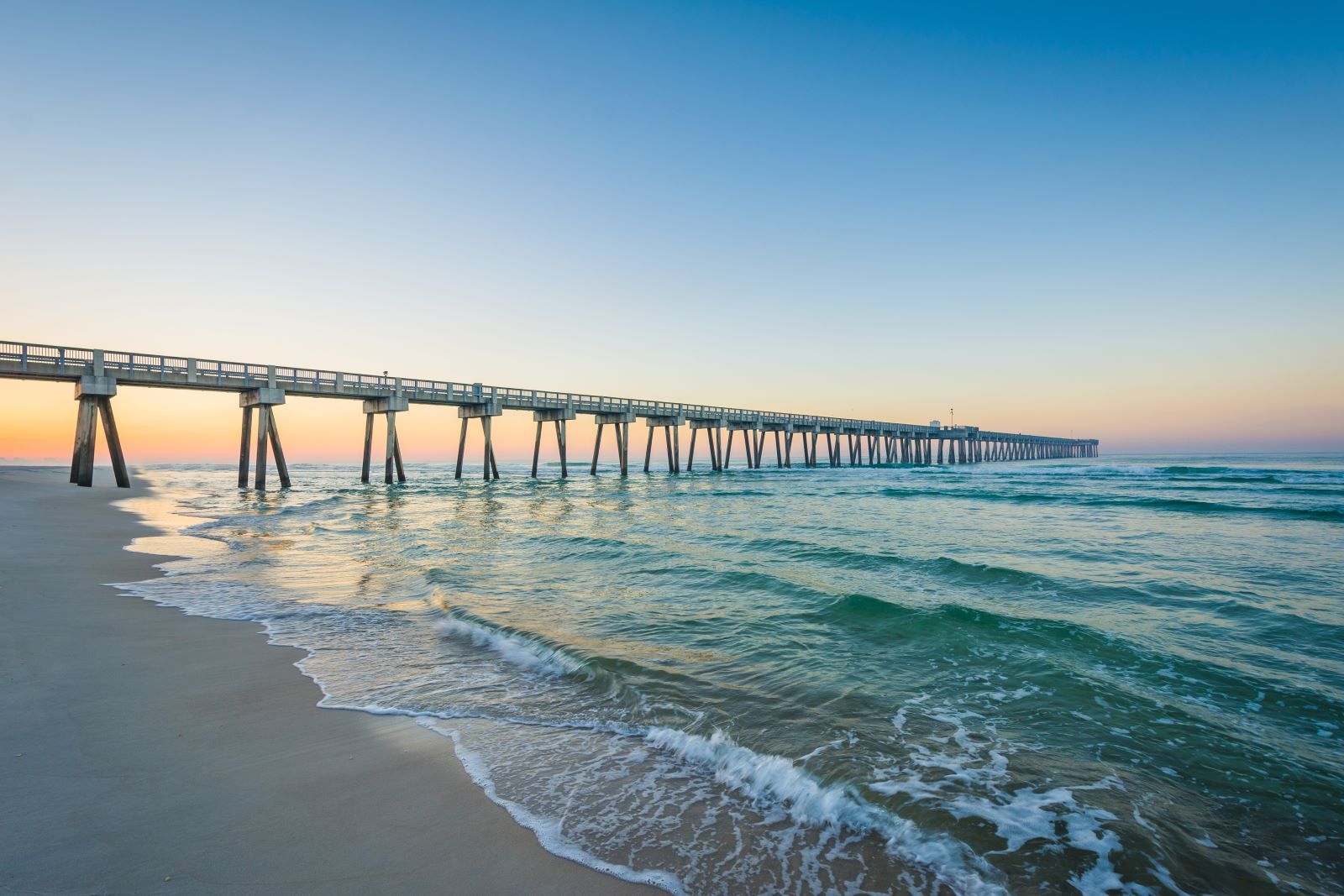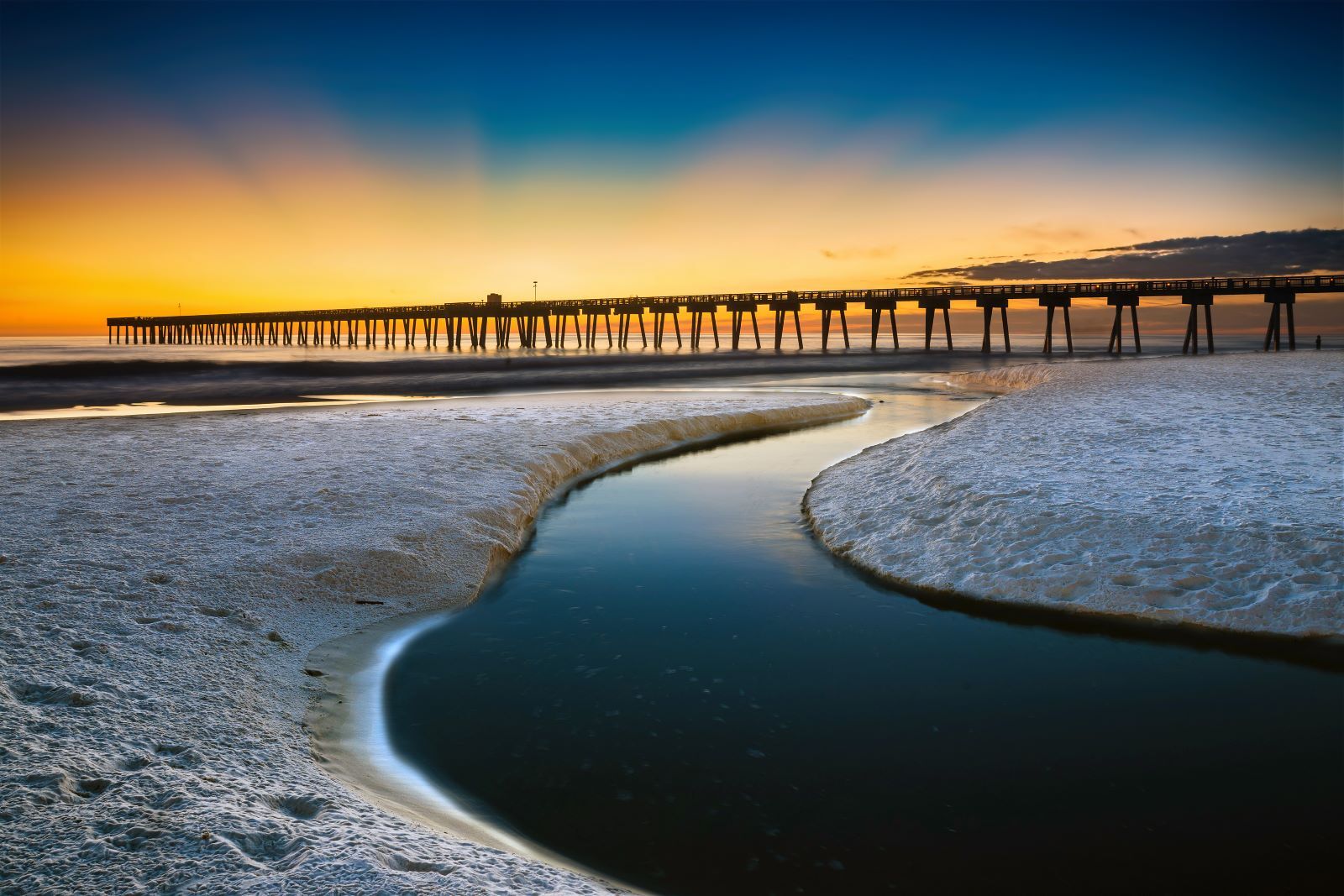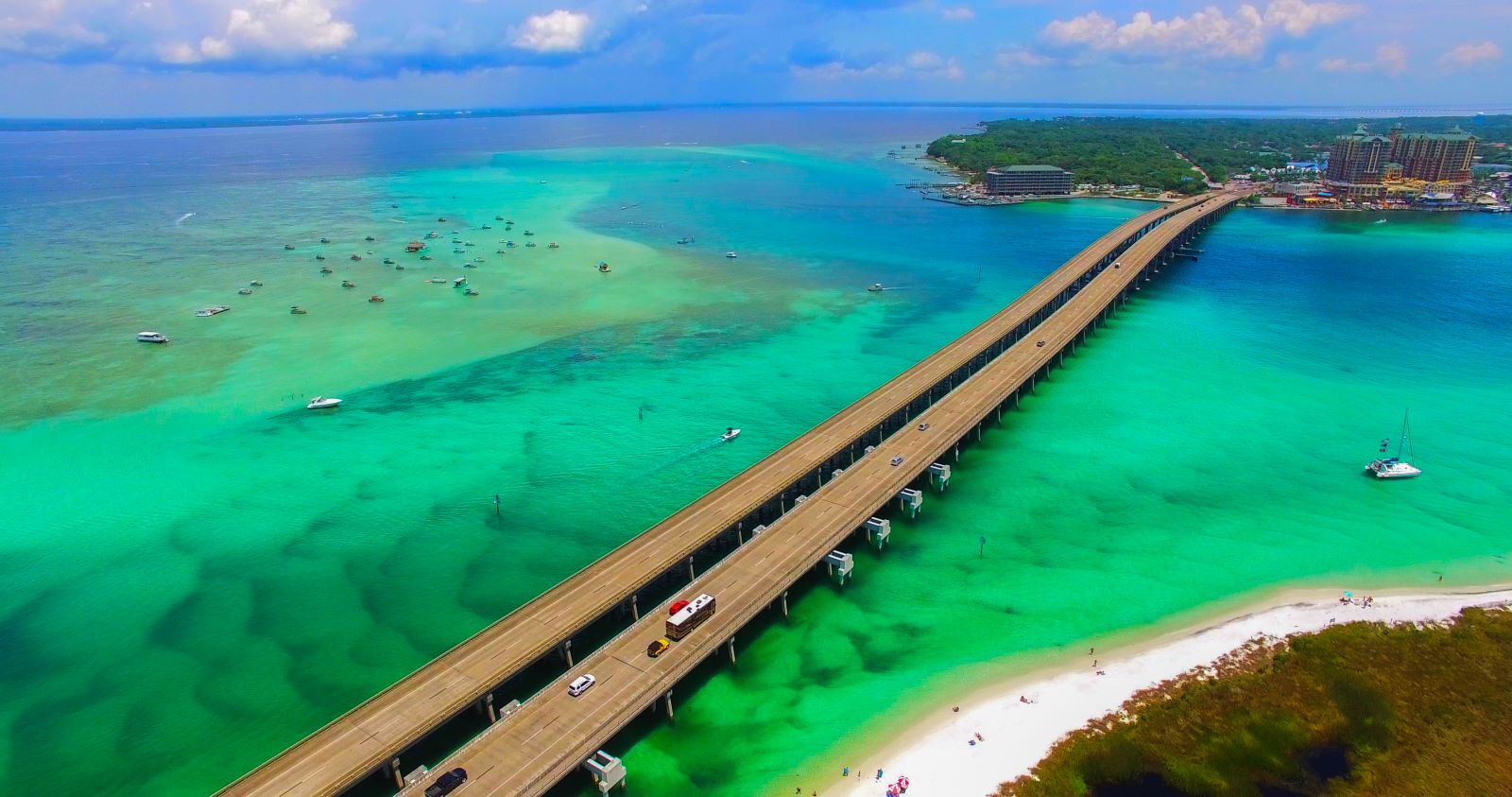Birdwatching near Panama City is one of the key reasons that guests book vacation rentals in Panama City Beach. Our pristine beaches and restaurants are just two reasons that people visit. Birdwatching, whether it be from the beach or Conservation Park, is another major reason.
If you’re an avid birdwatcher or you’re visiting Panama City Beach, Florida and want to see some wildlife along the way, a seabird identification guide can help.
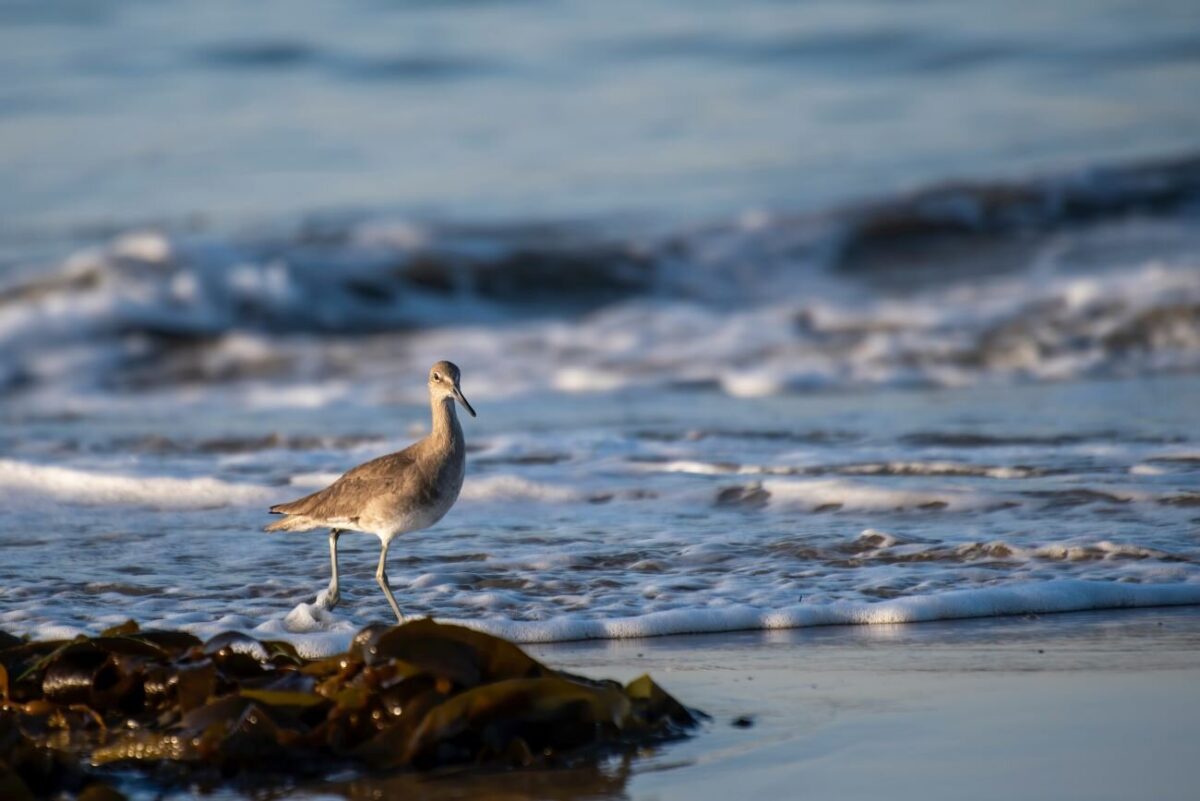
6 Panama City Beach Seabirds to Look for When Birdwatching
1. Black-bellied Plover
The black-bellied plover is a shorebird that is easy to identify by its black and white markings. Males will have a completely black belly with a mottled back featuring black and white colors. Females will have the same back markings, but the belly of females is a patchy black. Females will be seen in the wetland tundra.
One of the most common shorebirds of PCB, the black-bellied plover has a thick neck and a heavy-body.
Juveniles have a “fuzzier” look with a salt and pepper coloring.
2. Piping Plover
The piping plover is one of the prettiest birds on our beaches. These birds are fuzzy, and they breed in the north. You’ll find that non-breeding piping plovers are found in the area and can be seen at Panama City Beach’s Russell-Fields City Pier. Oftentimes, the birds will hide in plain sight thanks to their sandy gray backs, which allow them to blend right into the sand and ocean water.
Piping plovers can be easily identified from their orange legs and black collar.
Juveniles often do not have the sharp black collar. Habitat loss and disturbance have impacted this species, which is currently endangered.
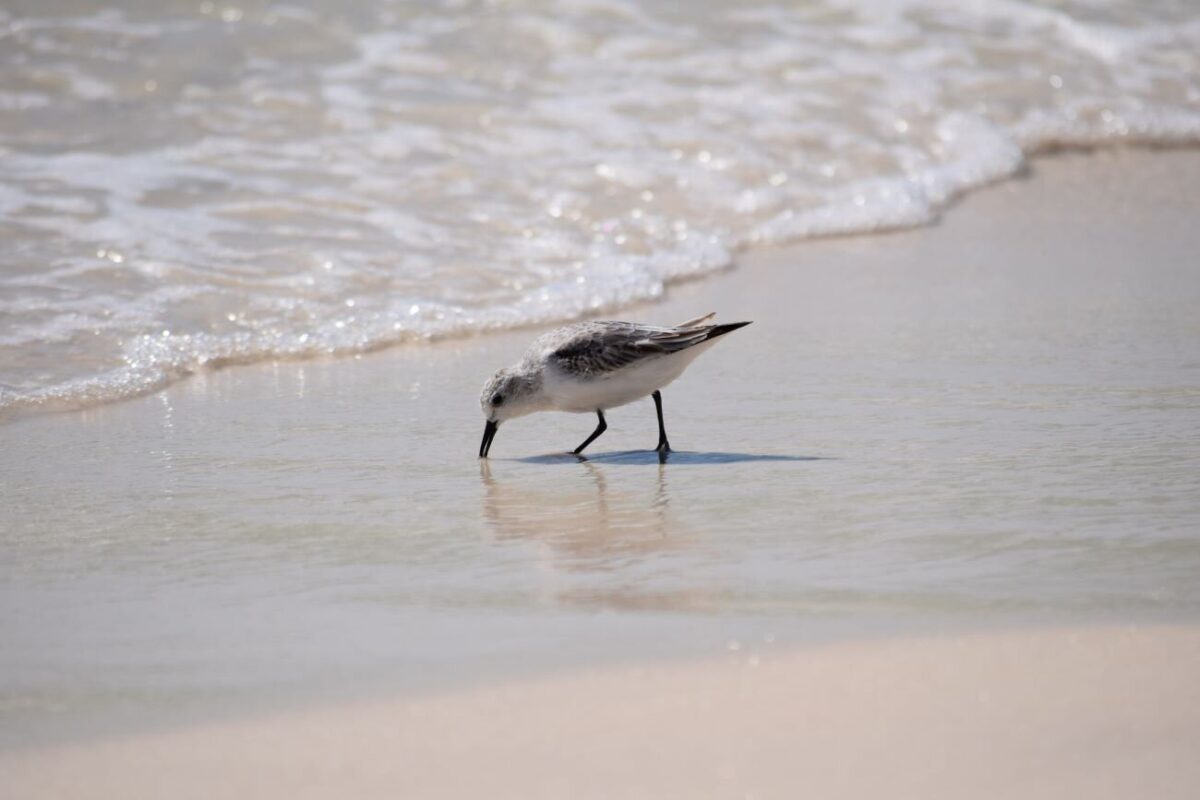
3. Sanderling
The sanderling has a similar look to the piping plover, but this bird does not have the same sharp black collar and is smaller in size. Sanderlings have black legs and are considered a medium-sized bird.
Nonbreeding sanderlings are seen on our shores and will have a pale plumage and a black bill.
When breeding, the backs of these birds will turn a brownish-orange color. Non-breeding birds will have a grayish or light tan coloring.
4. Willet
Willets are a beautiful flight bird that will be in Florida during their migration. The loud calls and wing markings make it easy to identify these large shorebirds. If you find a Willet in flight, you’ll notice that there’s a white and black stripe that spans the entire length of the wing.
In the winter, the Willet’s coloring will be gray, but when breeding, the color will be a molted brown.
The legs of the Willet are long, and the bird features a long straight bill.
5. Dunlin
The Dunlin breeds primarily in Canada and Alaska, but they also breed along the Florida coast. Most Dunlins are going to be in the middle of migration. During the fall, winter and spring months, the birds come to the coast to feed when the tide falls.
Dunlins have a black belly patch and will have a rusty back color.
When the bird is not breeding, it will feature a mousy gray-brown color. Large flocks of these birds can be seen during the winter months. The key defining feature of the Dunlin is a long, curved bill.
6. Semipalmated Plover
The semipalmated plover looks a lot like the sanderling and has the same black bill and leg coloring. Panama City Beach is right in this species’ migration path. The nonbreeding adult has a short head and neck. Streaking can be seen on the breast of the bird, and their flanks will have a slight droop to them.
Breeding semipalmated plovers have the same small head and neck, but you can distinguish this bird from others by the rusty coloring on their backs. If the back is a gray-brown, you’ve encountered a breeding adult.
Florida’s coast is home to over a hundred different species of birds. You will want to be on the lookout for Wilson’s and Snowy Plover when sightseeing. The Dowitcher, Red Knot, Ruddy Turnstone, Marbled Godwit and American Oystercatcher can also be found along the shores of PCB. A lot of guests stand outside of their Panama City Beach condo rentals and look up to see a variety of birds. There are over 140 species of birds in the area, so grab your binoculars and be sure to be on the lookout for some of the colorful, beautiful species of birds in our skies.
Book a Panama City Beach Rental with Dunes of Panama
Between all of your Panama City Beach birdwatching activities, you’ll need a place to stay! Luckily, our Panama City Beach vacation rentals are the perfect option for groups of all sizes. Discover your new home away from home when you book your stay with Dunes of Panama today.


